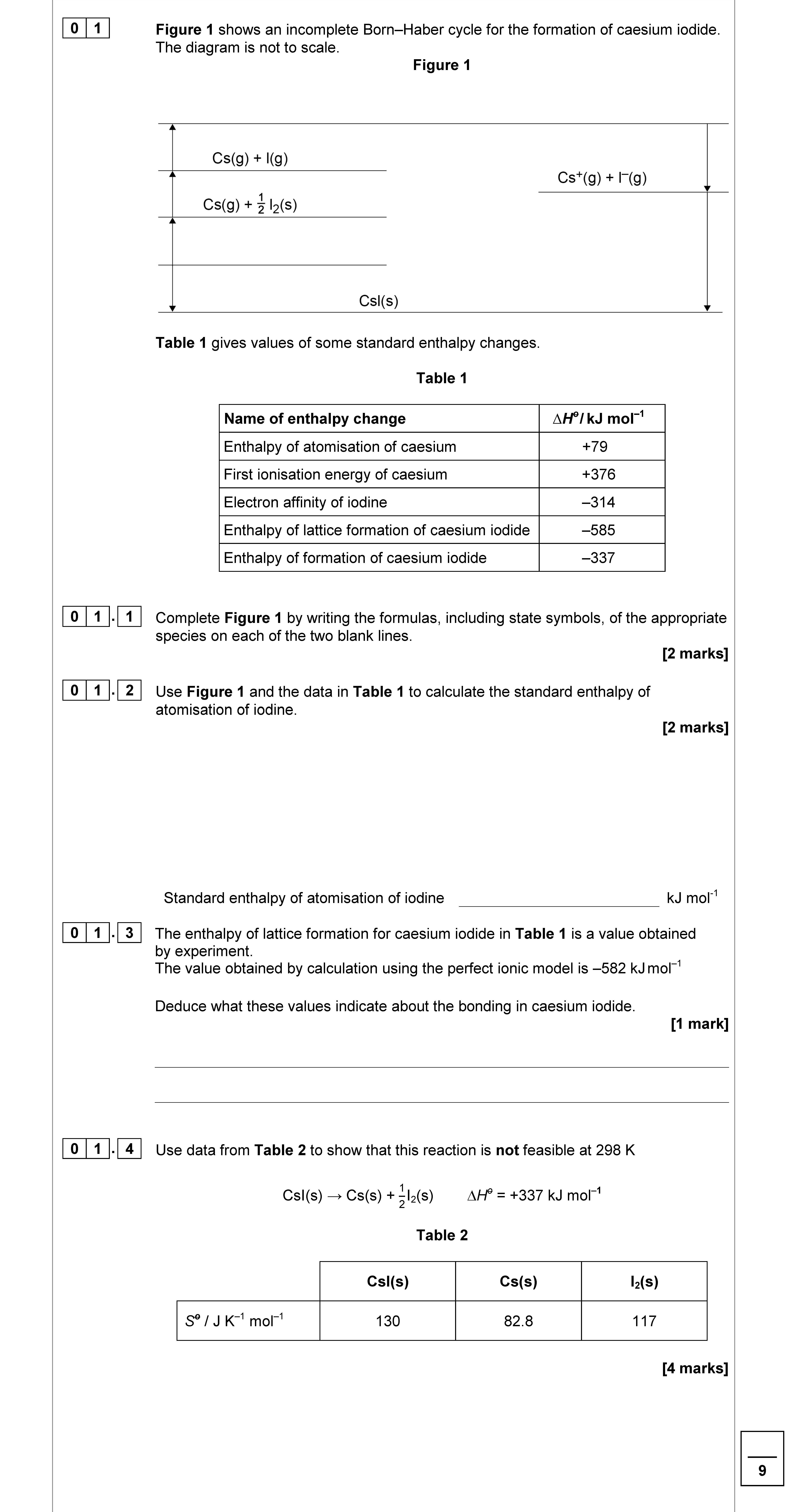Photo AI
Figure 1 shows an incomplete Born–Haber cycle for the formation of caesium iodide - AQA - A-Level Chemistry - Question 1 - 2019 - Paper 1
Question 1

Figure 1 shows an incomplete Born–Haber cycle for the formation of caesium iodide. The diagram is not to scale. Cs(g) + ½I2(g) → CsI(s) Table 1 gives values of som... show full transcript
Worked Solution & Example Answer:Figure 1 shows an incomplete Born–Haber cycle for the formation of caesium iodide - AQA - A-Level Chemistry - Question 1 - 2019 - Paper 1
Step 1
Step 2
Use Figure 1 and the data in Table 1 to calculate the standard enthalpy of atomisation of iodine.
Answer
To find the standard enthalpy of atomisation of iodine, we can start by writing the enthalpy change equation for the given reaction:
Using the values from Table 1, we can substitute:
Calculating gives us:
Thus, the standard enthalpy of atomisation of iodine is .
Step 3
Deduce what these values indicate about the bonding in caesium iodide.
Answer
The calculated standard enthalpy of atomisation of iodine () is significantly lower than the experimental value found using the perfect ionic model, which is −582 kJ mol⁻¹. This suggests that the bonding in caesium iodide is predominantly ionic in character, but may also have some covalent character, indicating it isn't purely ionic.
Step 4
Use data from Table 2 to show that this reaction is not feasible at 298 K.
Answer
To determine if the reaction is feasible, we'll calculate the Gibbs free energy change () using the relation:
From Table 2, calculate the entropy change:
Converting entropy into kJ:
Now using :
Since , the reaction is not feasible at 298 K.
